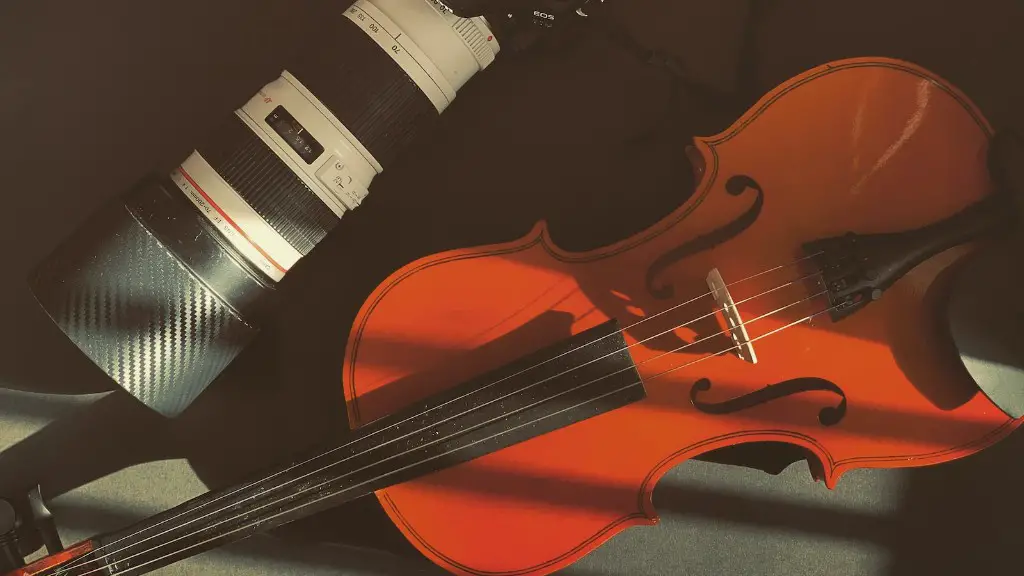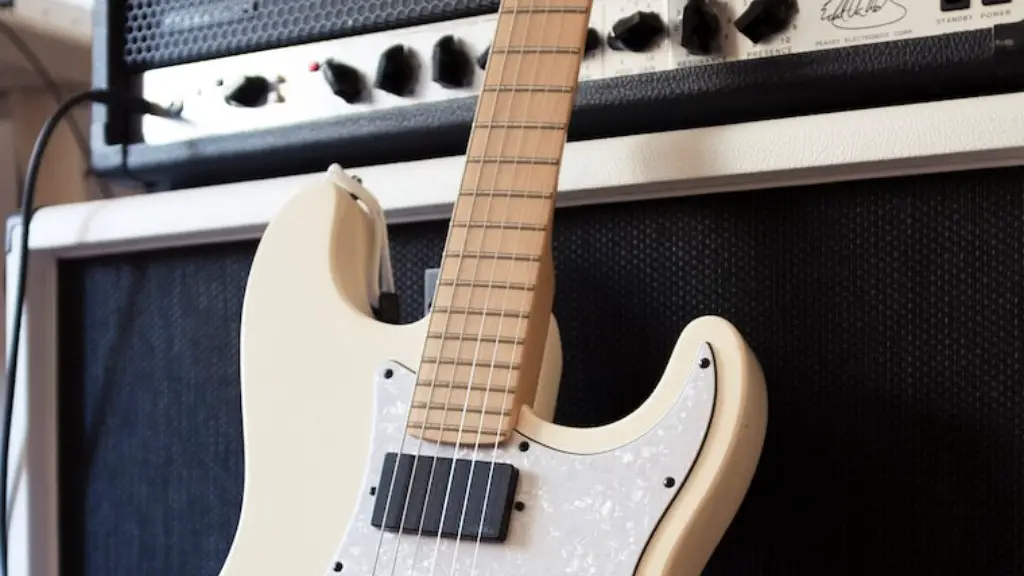A whammy bar, also known as a tremolo bar, is an essential accessory for electric guitars. It’s a metal bar connected to the bridge of the guitar and when pressed down or pulled up, it alters the tension of the strings. This provides a wide range of effects, from subtle vibrato to wild dive bombs.
The whammy bar is used in many genres of music, including rock, pop and jazz. The effect can be used to add an extra dimension to your guitar playing by adding color and texture. It’s also useful for creating dynamic shifts in style or creating fast runs and glissandos.
So if you’re looking to add some extra spice to your guitar playing, a whammy bar is an essential tool. With some practice you’ll be able to master this versatile device and explore its full range of possibilities.
Common Features of a Whammy Bar
A whammy bar, also known as a tremolo arm or vibrato arm, is a lever attached to the bridge of an electric guitar. It allows the player to bend notes and create vibrato effects in their music. The common features of a whammy bar include: a curved metal bar or rod with adjustable tension, a spring-loaded mechanism built into the bridge, and usually one or more screws for adjusting the tension. The whammy bar is often used in combination with effects pedals to create unique sounds. For example, when combined with distortion or delay effects it can create powerful wailing and screeching sounds that are popular in hard rock and heavy metal music. Using the whammy bar on its own can also create dramatic pitch bends that can be used to emphasize certain notes.
The length of the whammy bar affects how far it can be bent; longer bars allow for more dramatic bends. Most guitars come with an adjustable bar so players can customize their playing style. Some models even feature locking mechanisms so that the tension stays constant for more consistent sound every time you play. No matter what type of whammy bar you choose, it’s sure to add some flair and personality to your music!
Types of Whammy Bars
Whammy bars, tremolos, or vibratos are guitar parts used to vary the pitch of the strings. There are many types available for different playing styles and sounds. The most common type is the floating whammy bar, which is connected to a spring-based system that allows the player to bend notes up or down. The locking tremolo system has two posts with a nut and bolt that can be adjusted to keep the bridge in a fixed position. This type is great for heavy palm muting and vibrato techniques. A harmonic tremolo uses two screws at the bridge that can be adjusted to create an artificial harmonic when bending strings. Lastly, there’s the Bigsby vibrato tailpiece, which is great for creating smooth bends and subtle vibrato effects.
The type of whammy bar you choose should depend on your playing style and desired sound. Floating whammy bars are great for expressive techniques like dive bombs, while locking tremolos provide more stability for heavy palm muting and vibrato techniques. Harmonic tremolos can create unique sounds with artificial harmonics, while Bigsby tailpieces offer subtle vibrato effects.
The Benefits of Using a Whammy Bar
Using a whammy bar, also known as a tremolo arm or vibrato arm, can bring a unique and interesting sound to your guitar playing. It can add dynamic expression and creative flair to your music. The whammy bar is essentially a lever attached to the bridge of your guitar, allowing you to bend the strings and create vibrato or other effects. It can be used to achieve a variety of sounds, from subtle vibrato to wild dive bombs.
The whammy bar can be used to add interesting textures and nuances to your performance. It allows you to create melodic bends that would otherwise be difficult or impossible with your fretting hand alone. You can also use it for slide-style playing, allowing you to slide up or down the fretboard without having to move your fingers around. Furthermore, it can be used for dramatic effects such as dive bombs and rapid pitch shifts.
Using the whammy bar effectively requires practice and experimentation. You’ll need to learn how different amounts of pressure on the bar affect the sound it produces. With enough practice, you’ll be able to use it in creative ways that will enhance your performance. The whammy bar is an essential tool for any guitarist looking for new ways of expressing themselves with their instrument.It’s an incredibly useful tool that should not be overlooked.
How to Install and Use the Whammy Bar
The whammy bar, or vibrato arm, is a great way to add expression and creativity to your guitar playing. Installing it on your guitar is easy, and using it to create unique sounds is even easier. To install the whammy bar, you’ll need a few basic tools such as a hex wrench, screwdriver, and pliers. Begin by removing the strings from the guitar and loosening any screws that are in the way of the whammy bar. Next, attach the whammy bar to the bridge with a set screw or two that come with it. Finally, tighten all of the screws to secure it in place.
Using the whammy bar is simple – just push down on it with your picking hand while strumming or picking with your other hand. This will cause your strings to bend down in pitch for a vibrato effect. You can also experiment by pushing up instead of down for an opposite effect. Be sure not to use too much force so you don’t damage your guitar neck. With some practice, you can master techniques like dive bombs and harmonic squeals for creating some truly unique sounds!
Common Issues When Using a Whammy Bar
Using a whammy bar can be a great way to add vibrato and expression to your music, but it can also cause a few issues. One of the most common issues is poor tuning stability, as the bar may cause the strings to become detuned. To avoid this, make sure to tune your guitar after each use of the whammy bar. Additionally, you should always check for any signs of wear and tear on your guitar’s bridge components and make sure those parts are well-maintained. If you’re using an older style of bridge, be sure to check the intonation regularly. Finally, you should be aware that overuse of the whammy bar can cause damage to both guitar parts and strings. Be sure to use it sparingly to avoid any unnecessary damage and maintain optimal performance.
How to Troubleshoot Problems with Your Whammy Bar
The whammy bar, also known as a tremolo arm or vibrato arm, is a guitar tool used to manipulate the sound of your guitar. However, it can sometimes be tricky to troubleshoot problems with this device. To help you get started, here are a few tips for fixing common issues.
First, make sure the bar is securely attached to the guitar. If it’s loose or wobbly, tighten the screws and springs that secure it in place. If that doesn’t fix the issue, check the nut and bridge heights to ensure they are properly adjusted.
Next, if your whammy bar has become stuck in one position or won’t stay in tune when you use it, lubricate the nut and bridge saddles with graphite powder or other lubricant. This can help reduce friction and improve tuning stability.
Finally, if your whammy bar still isn’t working correctly, you may need to replace it altogether. Fortunately, replacement parts are widely available and fairly easy to install.Replacing the entire unit may be necessary for more severe issues. With these tips in mind, you should be able to get your whammy bar working perfectly again!
The End
To sum it all up, a whammy bar on electric guitar is a type of bridge equipped with a lever, also known as a tremolo arm, which can be used to manipulate the tension of the strings and cause them to vibrate in an oscillating fashion. This results in the pitch of the notes being bent or vibrated, creating some interesting effects. With its ability to add expression and variety to your playing style, the whammy bar can be a great addition to an electric guitar setup. For musicians looking for something extra out of their sound, experimenting with a whammy bar can be an interesting way to explore.



